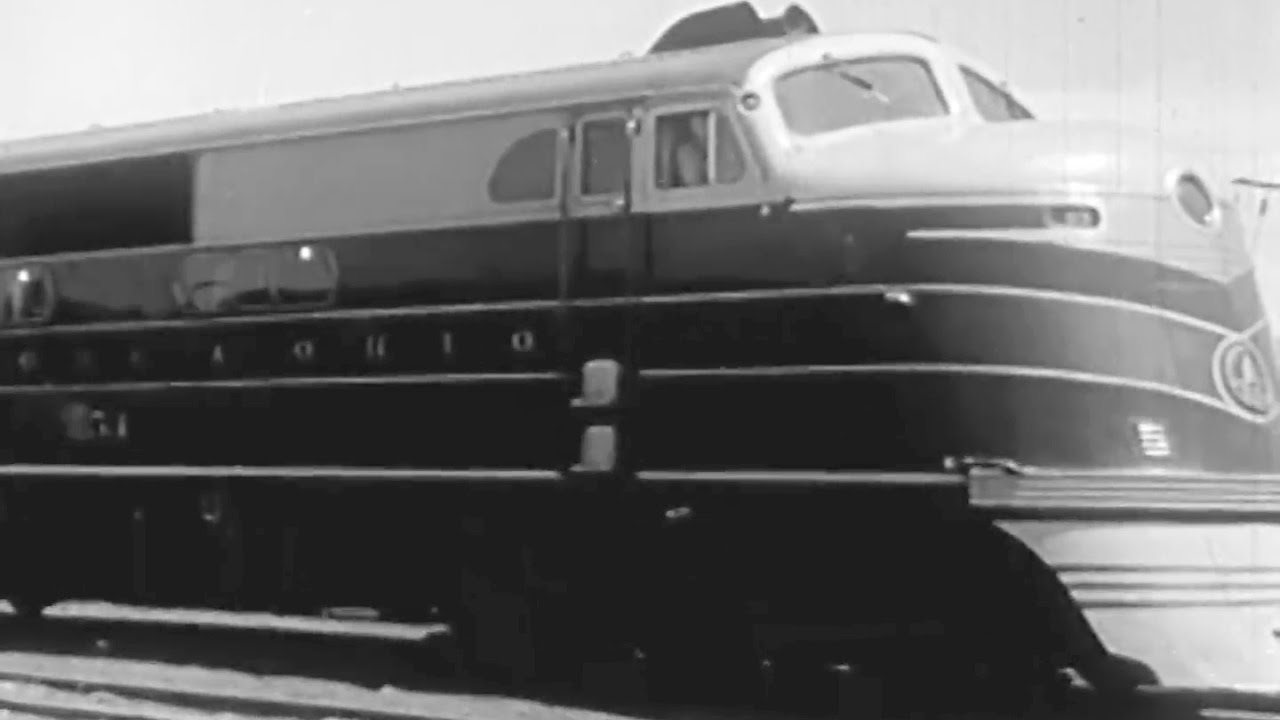Railroads, Rail Travel, Passenger & Freight Trains, Locomotives, Rail Transit playlist:
ERPI Films playlist:
Encyclopaedia Britannica Films playlist:
more at
“Describes a journey from a large city to the country on a streamline train. Shows duties of many of the people who work in the station and on the train.” At 10:09 this film was broken and spliced, and the last minute of the film is from the 1955 second edition (up to that point it is the 1940 1st edition).
see also 1955 2nd edition:
Reupload of a previously uploaded film with improved video & sound.
Public domain film from the Library of Congress Prelinger Archives, slightly cropped to remove uneven edges, with the aspect ratio corrected, and one-pass brightness-contrast-color correction & mild video noise reduction applied.
The soundtrack was also processed with volume normalization, noise reduction, clipping reduction, and/or equalization (the resulting sound, though not perfect, is far less noisy than the original).
…A passenger train is one which includes passenger-carrying vehicles. It may be a self-powered multiple unit or railcar, or else a combination of one or more locomotives and one or more unpowered trailers known as coaches, cars or carriages. Passenger trains travel between stations or depots, at which passengers may board and disembark. In most cases, passenger trains operate on a fixed schedule and have superior track occupancy rights over freight trains.
Oversight of a passenger train is the responsibility of the conductor. He or she is usually assisted by other crew members, such as service attendants or porters. During the heyday of North American passenger rail travel, long distance trains carried two conductors: the aforementioned train conductor, and a Pullman conductor, the latter being in charge of sleeping car personnel.
Many prestigious passenger train services have been given a specific name, some of which have become famous in literature and fiction. In past years, railroaders often referred to passenger trains as the “varnish”, alluding to the bygone days of wooden-bodied coaches with their lustrous exterior finishes and fancy livery. “Blocking the varnish” meant a slow-moving freight train was obstructing a fast passenger train, causing delays.
Some passenger trains, both long distance and short distanced, may use bi-level (double-decker) cars to carry more passengers per train. Car design and the general safety of passenger trains have dramatically evolved over time, making travel by rail remarkably safe…
The National Railroad Passenger Corporation, doing business as Amtrak (reporting mark AMTK), is a government-owned corporation that was organized on May 1, 1971, to provide intercity passenger train service in the United States. “Amtrak” is a portmanteau of the words “America” and “track”. It is headquartered at Union Station in Washington, D.C.
All of Amtrak’s preferred stock is owned by the U.S. federal government. The members of its board of directors are appointed by the President of the United States and are subject to confirmation by the United States Senate. Common stock was issued in 1971 to railroads that contributed capital and equipment; these shares convey almost no benefits but their current holders declined a 2002 buy-out offer by Amtrak.
Amtrak employs nearly 19,000 people. It operates passenger service on 21,000 miles (34,000 km) of track primarily owned by freight railroads connecting 500 destinations in 46 states and three Canadian provinces. In fiscal year 2011, Amtrak served 30.2 million passengers, representing nine straight years of record ridership…
Amtrak’s origins are traceable to the sustained decline of private passenger rail services in the United States from about 1920 to 1970. In 1971, in response to the decline, Congress and President Richard Nixon created Amtrak. The Nixon administration secretly agreed with some railroads that Amtrak would be shut down after two years. After Fortune magazine exposed the manufactured mismanagement in 1974, Louis W. Menk, chairman of the Burlington Northern Railroad remarked that the story was undermining the scheme to dismantle Amtrak. Though for its entire existence the company has been subjected to political cross-winds and insufficient capital resources, including owned railway, Amtrak’s ridership has maintained consistent growth…
Of the railroads that were still offering long-distance passenger service in 1971 only six declined to join Amtrak…

